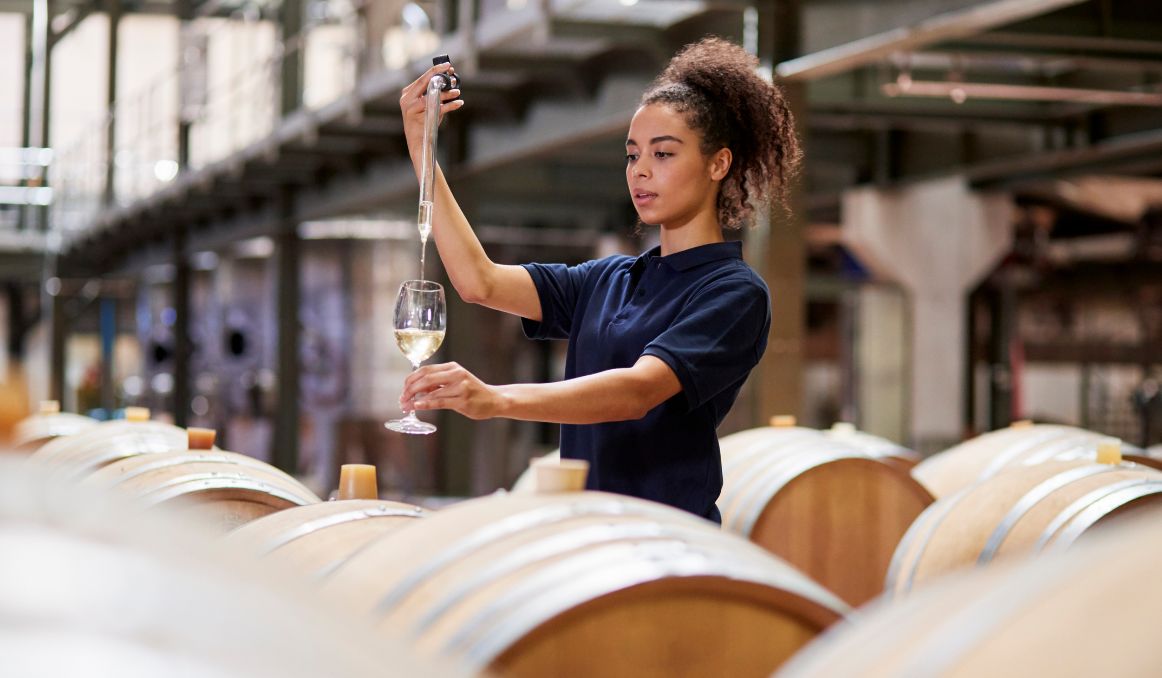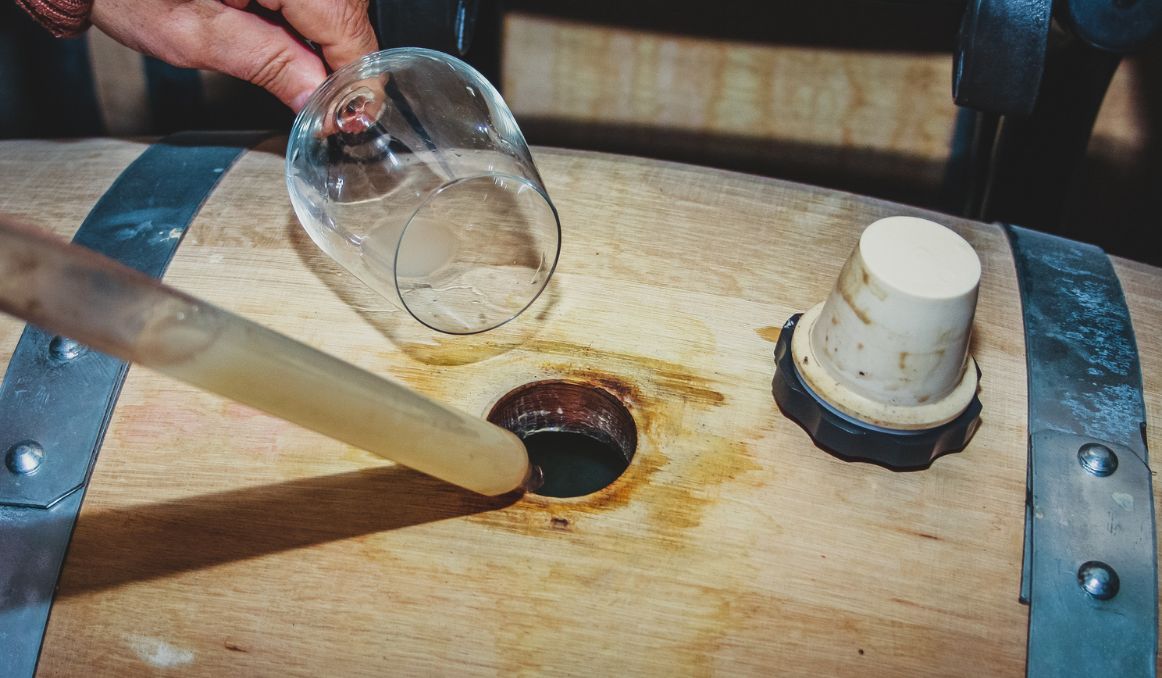Can You Add Too Much Yeast Nutrient to Wine?
It’s happened to the best of us. Fermentation gets stuck, it slows down, or it stops altogether, and you struggle with what to do.
One option is to add yeast nutrient. But now you have another problem. Can you add too much yeast nutrient?
In short, yes, you can. But let’s talk about why.
Wine Fermentation

The history of wine likely goes back even further than that of beer. Why?
Because even monkeys drink wine!
It’s true.
Anthropologists have found that monkeys in the wild make their own wine from palm trees and other fruits, allowing ripe fruit or sap to ferment and then going on the monkey version of drunken benders. They even go so far as to steal wine from others monkeys when they run out.
So, it is quite likely that humans have been fermenting and drinking wine since before we evolved into humans.
It is really quite simple to make wine, after all.
Grapes are selected and crushed and the liquid (now called must) it is left out to ferment. Yeast is naturally attracted to the sugars naturally occurring in the must, and it gets to work consuming all of those sugars and converting them to alcohol.
From the beginning of time to today, very little has changed, but for one thing: the yeast.
Yeast in Wine
For thousands of years, if not longer, winemakers have left the fermentation process up to nature. Yeast is naturally occurring and it is everywhere. Leave grape juice out and yeast will find it.
A single celled, eukaryotic organism that has been around since the birth of life on earth, yeast knows its job, and it does it well. It can reproduce with oxygen or without it. It can sneak into pretty much any passageway, and once it has done its job fermenting, it usually leaves the food or drink better off, and better for humans, than it was previously.
Think about it, you could have a harmful bacteria on your grapes. The yeast, in converting the sugar to alcohol, would kill that bacteria off.
You could have contaminated water for your grapes or beer, and the yeast would sanitize that contamination.
And yeast does not just make alcohol. It also makes nutrients that aid in healthy digestion, promote a strong immune system, and fight disease.
Yeast is a wonder fungus of sorts.
So, why would you need to add yeast nutrient? And what is yeast nutrient anyway?
Stuck Fermentation
Sometimes, for a variety of reasons, yeast gets stuck during fermentation. You will notice that the must is not bubbling as actively with the production of carbon dioxide. You will be able to detect your yeast floating at the top or settling at the bottom, but your alcohol process has not completed. This stagnation is called stuck fermentation.
It is usually caused by a simple mistake in temperature.
Too hot and your yeast will die off.
Too cold and your yeast will go to sleep.
So you need the ideal temperature, for red wine between 68 and 86 degrees Fahrenheit, and for white wine below 59 degrees Fahrenheit.
The first thing you should do, if you notice stuck fermentation, is to check your temperature.
After that, you may decide to add yeast nutrient.
Yeast Nutrient

Healthy yeast is key to proper fermentation and the full effect of flavors and aromas you are looking for in wine or beer, or any other fermented food or drink, really.
If your yeast has stagnated because it is in poor health, either not vital or viable, you will need to help it get healthy. You do this by adding yeast nutrient.
Typically, yeast nutrient is a powder you will add to your must that contains:
Diammonium Phosphate, a type of salt critical to yeast health that is usually naturally occurring in yeast.
Yeast Hulls, basically dead yeast that provides fat and fatty acids for live yeast to eat and thrive on.
Vitamins for cell growth, Thiamin and Biotin.
And Magnesium and Zinc to help increase cell count and boost metabolism.
You will typically add one teaspoon of yeast nutrient to one gallon of must, and you should notice the yeast activity increasing almost instantly.
But what if you accidentally added more?
Fear not, there is probably not a ton of danger to adding too much yeast nutrient. In fact, the FDA regulates how much yeast nutrient can be added to wine, and it will say so on the package.
What’s the danger? There is a slight danger of too much ethyl carbamate being produced as a result of too much yeast and yeast nutrient being consumed.
Ethyl Carbamate is a suspected human carcinogen.
But, to be clear, ethyl carbamate is present in all fermented foods and has not shown to be harmful in the long term to people who eat kimchi or drink kombucha, or eat yogurt or sauerkraut.
It certainly seems to be the case where, like with sassafras, the danger is only reached when copious amounts are consumed at once, and the benefits far outweigh any potential risks.
What is most likely to happen is the yeast will do all the consuming it can and then settle at the top or bottom of your container, and you will know fermentation is done. It really is quite an efficient little fungus.
In the end, it pays to be aware of your measurements, your temperatures, and the vitality of your yeast before you begin fermenting, but the real dangers and real harms are, as usual, and in most cases, minimal.
Cheers!
Passionate about the beer and/or wine making process? So are we! If you’re interested in finding out how you can use our technology to control fermentation and monitor your yeast, save work hours and improve the cost-efficiency of your business, drop us a line at [email protected] or check out our product pages:
- Oculyze BB 2.0 (Better Brewing) Yeast Cell Counter App + Hardware
- Oculyze FW (Fermentation Wine) Yeast Cell Counter App + Hardware
Also, you can now get access to a fully functional demo account to test our Web App. Completely free of charge and with no commitment to purchase.
Sources:


